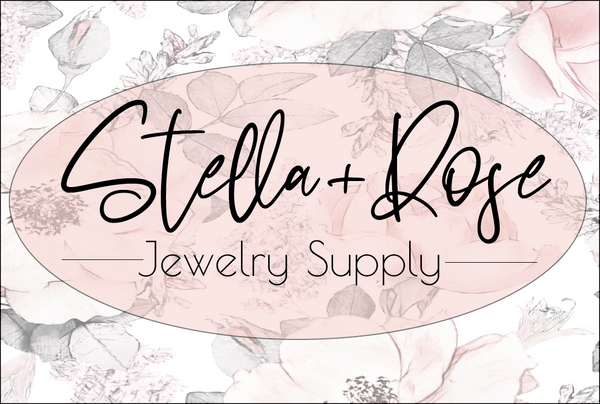Permanent jewelry has taken social media by storm. This trend has been a fast-growing industry. Whether you're a jewelry enthusiast or an aspiring permanent jewelry artist, you’ve likely come across the term “argon gas” in your research. But do you really need argon gas for permanent jewelry?
Let’s break down what argon gas is, how it fits into the fusing process, and whether it’s worth the investment for your business.
If you don't already know what permanent jewelry is, check out our article here
What Is Argon Gas?
Argon gas is a colorless, odorless inert gas that is commonly used as a shielding gas in bonding applications. Its primary job is to create a protective atmosphere around the fusing area, preventing oxidation and contamination from the surrounding air. This is especially important when bonding delicate or reactive metals like gold or silver.
In the context of permanent jewelry, argon gas is used with pulse arc welders to improve the quality of the seal, making it smoother, stronger, and more resistant to discoloration.
Is Argon Gas Necessary for Permanent Jewelry?
Short answer? No, it’s not strictly necessary. But it does make a very noticeable difference.
Most permanent jewelry welders can technically function without argon gas. In fact, many beginners skip it altogether to save on startup costs. However, professionals and experienced artists often insist that using argon gas for permanent jewelry creates a visibly better result.
Without argon, you may notice:
-
Slight discoloration at the bond point
-
Weak or brittle joints on certain metals
-
A rougher, more inconsistent finish
With argon gas, your join is:
-
Cleaner, with minimal oxidation
-
Structurally stronger
-
Visually smoother and more polished look
Real-World Opinions: Is Argon Worth It?
The answer is a resounding yes, especially if you want to offer top-tier service. They explain that while their welders don’t require argon to function, the gas provides a consistent shield that enhances arc stability and improves the cosmetic look of the bond.
Customers who receive permanent jewelry expect quality. A clean, invisible seal is part of that experience, and argon gas makes it easier to deliver.
Think of it this way: if you’re marketing yourself as a premium brand, skipping argon could cut corners where your customers expect excellence.
What Does Argon Setup Look Like?
Setting up an argon gas system is easier than it sounds. Here’s what you need:
-
Argon Tank – Usually a 20 to 40 cu. ft. cylinder. The purer the gas (typically 99.996% pure), the better your bond.
-
Gas Regulator – Controls the flow and pressure of the gas.
-
Tubing – Connects the tank to your welder.
Most artists run their argon pressure at around 5-8 PSI, and a small tank can last for several hundred welds, depending on how long each pulse lasts.
As for cost? A filled argon tank typically runs $75–$150 and lasts months for low- to moderate-volume artists.
It all makes sense once you understand how argon is used for welding.
Pros and Cons of Using Argon Gas
Pros
-
Stronger, smoother bonds
-
Less oxidation and discoloration
-
Better results with sterling silver and thicker chains
-
Higher perceived value for clients
Cons
-
Additional equipment cost
-
Requires more setup and maintenance
-
Ineffective in windy outdoor settings
Industry Advice: When to Upgrade
Once you’ve booked consistent appointments or decided to offer permanent jewelry professionally, it’s a smart move to add argon gas to your setup. Think of it as investing in polish—it helps you create flawless pieces that hold up beautifully over time.
Customers typically seek out permanent jewelry for both style and symbolism. Clean presentation matters. Offering an invisible fuse that’s clean and seamless not only enhances your brand but also reduces the chances of future issues like breakage or tarnishing at the weld point.
Final Verdict
So, do you need argon gas for permanent jewelry?
No, but you’ll probably want it.
Argon gas isn’t mandatory for fusing permanent jewelry, but it’s one of the easiest ways to upgrade your weld quality, improve your customer experience, and elevate your brand reputation. If you’re just starting out, you can work without it. But as your skills grow and your calendar fills up, adding argon gas becomes a smart next step.
Whether you're linking your first chain or scaling a full-time jewelry business, the choice comes down to quality, not necessity.
Recap: When to Use Argon Gas for Permanent Jewelry
|
Use Case |
Recommended? |
|
Beginner testing at home |
Not essential |
|
Pop-up events indoors |
Yes |
|
Outdoor festivals or windy areas |
Optional |
|
Sterling silver or thick chains |
Yes |
|
High-end luxury clients |
Yes |
|
Budget-conscious starter setup |
Optional |
Want more tips like this? Follow our blog for how-tos, startup guides, and expert reviews on the best tools in the business.
Let us help you build your brand—one (seamless) connection at a time.
